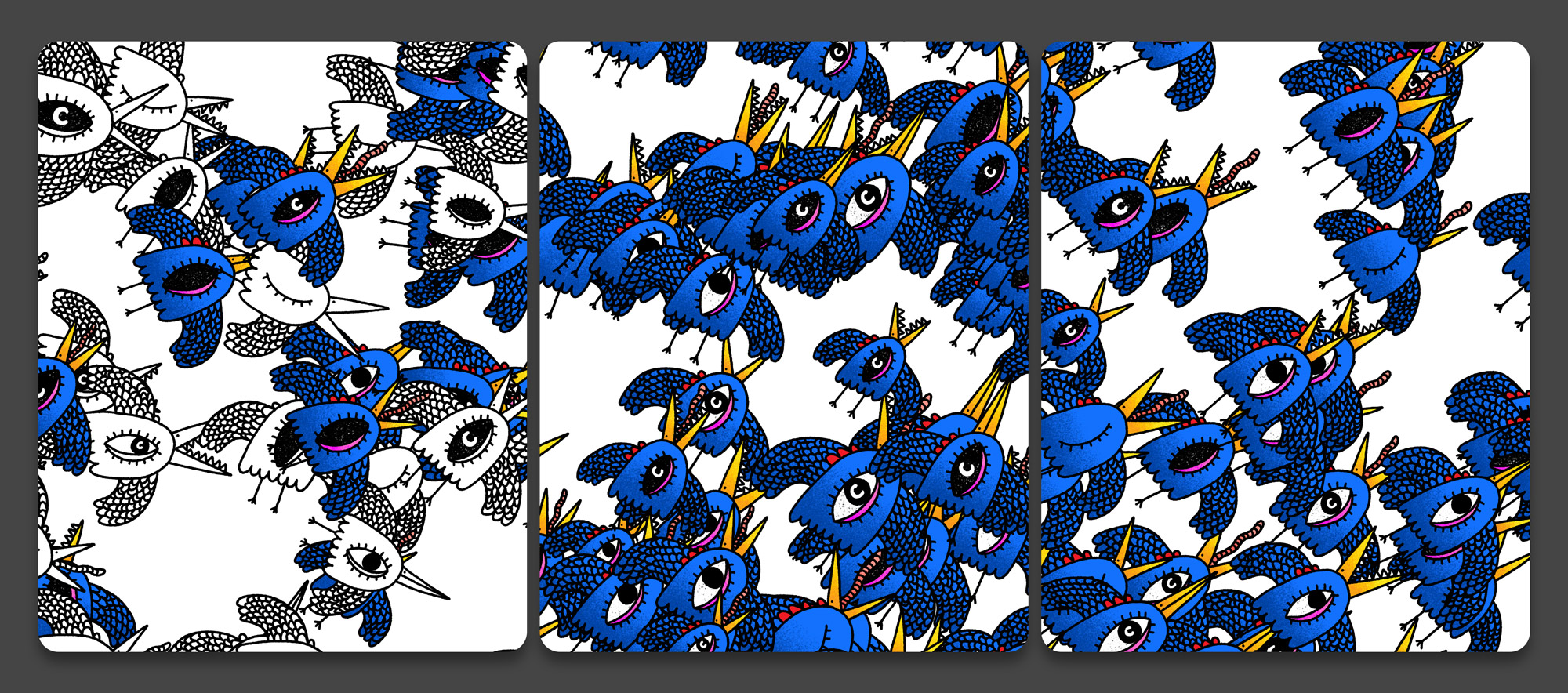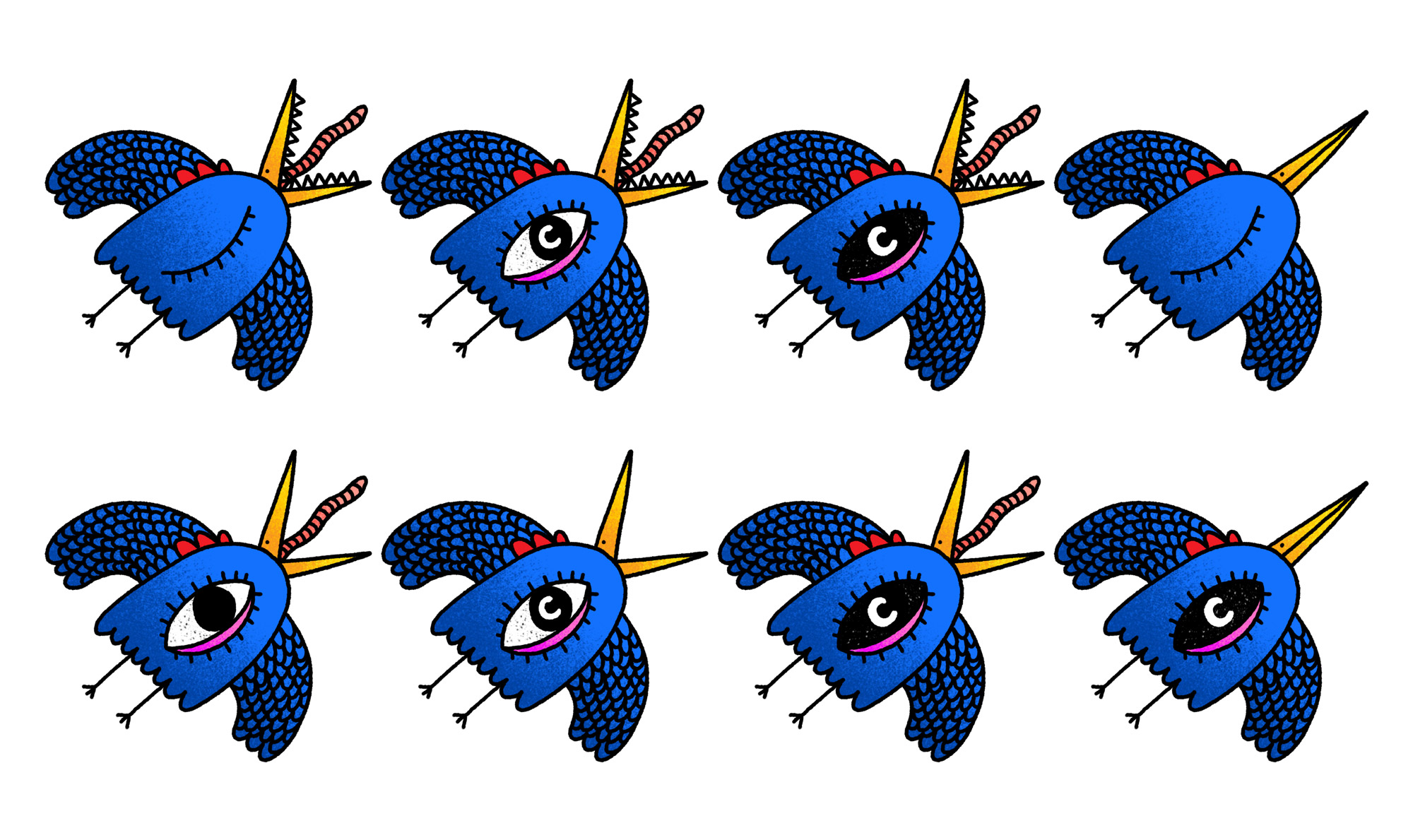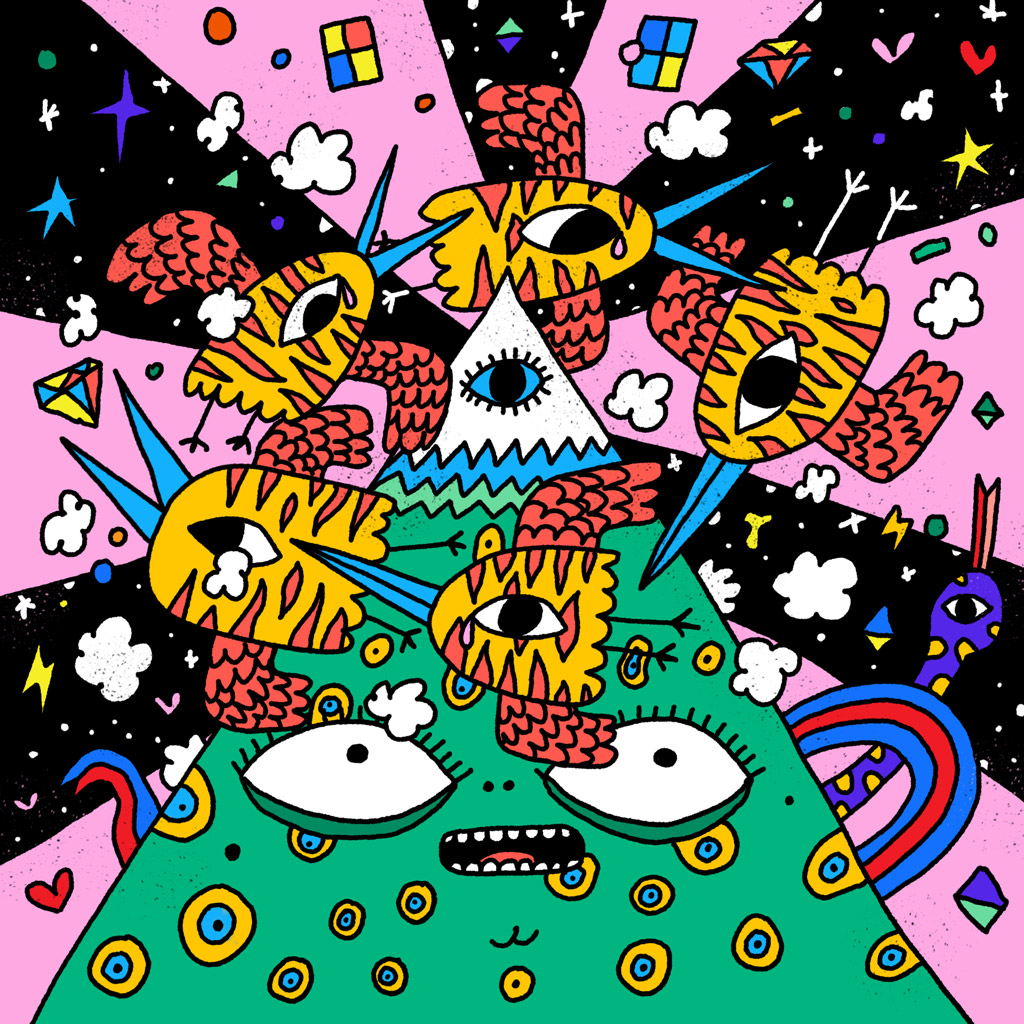Universe Library
A library of commonly drawn elements
The Universe Library will become a collection of common elements I use in my artwork—submarines, clouds, suns, birds, jewels, jellyfish, mushrooms—mostly those kind of things. But I could, in theory, add any kind of elements to the library.

Just 3 scenes generated with code
For example, I’ve created the first 2 groups in the library—blue birds and plain white birds. This is my prototype. Each group has 10 birds with 25 variations—different types of eye combined with different types of beak. Each bird is a mini-generative piece of art with traits and attributes. That means, for the group of blue birds, there are 250 unique items that could be added to the canvas. When you add rotation, position, and volume of birds into the mix, the variety of scenes and compositions I can create (pretty quickly) racks up. The idea of a library is perfect for my work, which has a recurring theme of dreams in it. And, in dreams, there are recurring elements and themes.

8 of 25 possible variations for a single body. Subtle variations, but variations nonetheless
I’ve been wanting to begin this library since the early days of The Doodleverse collection. But it always felt overwhelming. Parts of creating it are incredibly tedious. I’m ADHD. It’s always been quicker to create a piece from scratch than create and use elements from my hypothetical library—and it’s given me more dopamine. However, the elements in previous pieces can never be reused. Because they aren’t split into layers and often times have other elements on top of them, which means I’ve erased the unseen artwork. If I wanted to nudge an element a few pixels up, or to the right, or try it elsewhere in the composition, I’d need to redraw parts of it. I’ve often been too lazy to do this. Going forward, I’d like to draw all elements as their own individual element and add it to the library—possibly with some attributes that give it variety. It will take longer to create pieces in the beginning, but I’m hoping it will pay off. The kind of art it’ll lead to will be different, layered, and more complex. It feels like I’ve developed enough patience and discipline to tackle this project now.

You can see how the birds overlap each other, and the mountain, here
So, is the library just a bunch of elements you can add to pieces? No. In conjunction to creating the separate elements, I’m creating a code base that will allow me to do a few different things:
- Add items from groups to the canvas in batches. The code will choose random elements (say 20) and position and rotate them randomly. A computer does this a million times faster than I can. And it does it randomly. It creates unique compositions of elements. It’s like having a collaborator—not AI level, but similar.
- I’ll also be able to add items in a burst. Same as above, but fewer in a concentrated area. With a click of my mouse button, or tap of a keyboard button.
- I’ll also be able to add a single random item from a group—again, with a tap of a button.
- With the generative art learnings I’ve picked up from working on @0xGenny and Dreamheadz, I’ll be able to create doodled pieces of art that come to life with code. This excites me no end. I love mixing handmade stuff with technology.
The Universe Library is a precursor to the LIMINA project, because LIMINA will use all kinds of elements to form parts of each artwork. But the library has multiple uses for the future:
- Generative art collections (art made with code—Processing and p5.js).
- Collections that mix generative and unique elements of art—like this LIMINA project.
- Quick additions to artworks.
- Prototyping of scenes and idea-generation.
- Non-art artwork. Like merch, stickers, banners, socks.
- Individual items can be used as ERC-1155 tokens to build your own ERC-721 Rich-inspired pieces. I’m epically looking forward to this. Based on what pieces you hold, you’ll potentially get access to different ERC-1155 tokens you can use to create your own collaborative artworks.
What are the next steps for me?
- Create more and more of the library groups and elements.
- Write more of the code features. This could be a massive project in itself. So I’ll need to balance features with what I need to create the LIMINA collection.
- Creating starting visuals for LIMINA.
Let me know your thoughts on this method of creating art. Ask anything—I want to let you into my process of creating the art that I do.